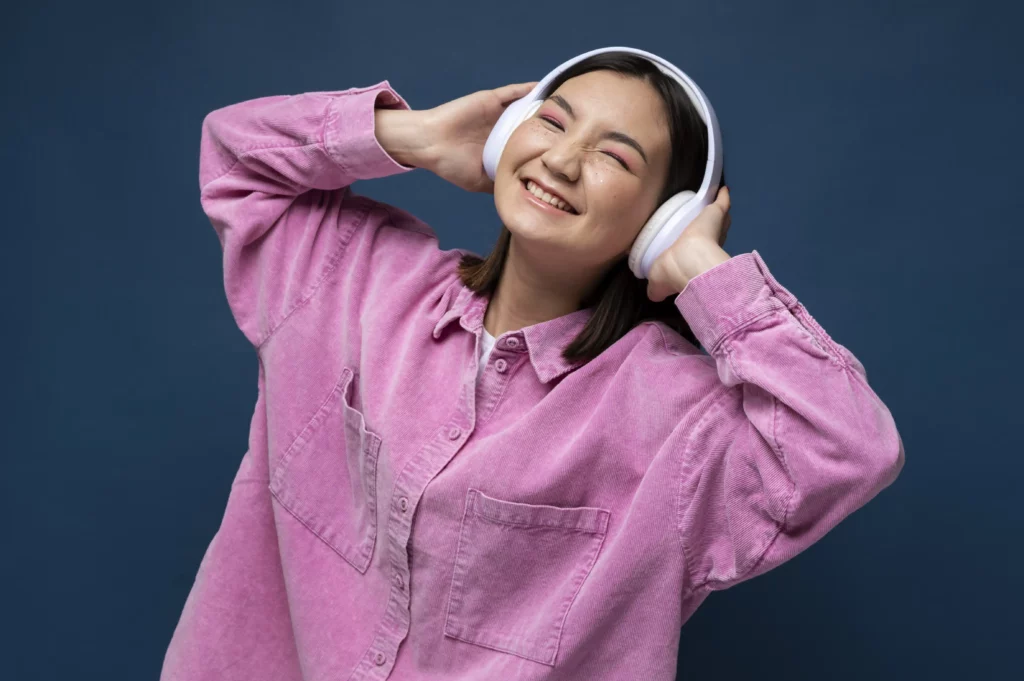Translating song lyrics isn’t just a language game—it’s a high-wire act between melody and meaning. And when the lyrics are in Chinese, you’re not just translating words—you’re translating poetry, history, and emotion wrapped in melody. With every line, you’re decoding centuries of cultural nuance, all while keeping time with the beat.
Translating Chinese lyrics is challenging due to tonal structure, cultural references, poetic compression, and the need to preserve rhythm and emotion—often all at once.
The beauty of a Chinese song can get lost in translation if you’re not careful. To preserve the soul of a song, lyric translators must balance poetry with practicality, metaphor with meaning. Here’s why it’s a job that takes more than just language skills — and why you should keep reading: you’ll discover the delicate art behind translating Chinese lyrics, learn how culture, tone, and rhythm come into play, and gain insight into what makes a translated song truly resonate across languages.
1. The poetic density of Chinese lyrics
Chinese song lyrics often say a lot in just a few words. The language is compact—each character carries a world of meaning. For example, the word “缘” (yuán) conveys fate, affinity, and destined connections—all at once. A single line like “一眼万年” (“one glance lasts ten thousand years”) compresses deep emotion and mythological reference into just four characters.
In total, this density means the translator must unpack layers of meaning and decide which layer to prioritize. Should the translation preserve the metaphor, the rhythm, or the rhyme? As a general rule, you can’t have all three without compromise.
According to veteran translator Xu Yuanchong, “A good translation must be faithful, expressive, and elegant—but song lyrics often force you to choose just two.” Most translators agree that capturing emotion is non-negotiable, even if rhyme gets lost.
2. Musical structure and syllable counts
Chinese lyrics tend to align with the syllable-based structure of Mandarin, where each character is one syllable. A 7-character line may sound natural in Mandarin but becomes awkward when translated directly into English.
On average, an English lyric takes more space. To fit the rhythm, translators often need to restructure entire lines or insert filler words—risking a loss in emotional power.
3. Cultural and idiomatic references
Songs frequently contain idioms, historical allusions, or traditional symbols like “red beans” (symbolizing longing) or “willow branches” (symbolizing farewell). Without explanation, these images fall flat.
For instance, the line “红豆生南国” might literally mean “red beans grow in the south,” but poetically it alludes to yearning and love. A literal translation misses the point entirely.
As a whole, lyric translators often walk a fine line between keeping cultural flavor and ensuring the audience understands the meaning.
4. Emotional tone and vocal performance

A song’s emotional impact isn’t just in the words—it’s in how they’re sung. Some words stretch, echo, or repeat for emphasis. The rhythm, pitch, and even melodic pauses influence meaning.
Translators must consider how their lyrics will sound, not just what they say. In karaoke-heavy markets like China, this becomes especially important.
5. Balancing authenticity with singability
Finally, there’s the question: should the translation be singable, or just accurate? Singable versions sacrifice some fidelity to preserve flow and rhyme.
That’s why many professional translations come in two versions: one faithful version for subtitles, and one adapted version for performance.
Lyricist and translator Lin Xi once said, “Translating songs is like dancing in chains—you must move, but carefully.”
Want to see how all this theory plays out? Below we’ll compare multiple English translations of iconic Chinese lyrics—from Teresa Teng’s classics to modern Mandopop—to explore which techniques work best, and why.
But first, let’s look at a few examples where translators nailed the balance between lyricism and meaning.
Famous Chinese Songs and Their Thoughtful Translations
“The Moon Represents My Heart” (月亮代表我的心) – Teresa Teng

Original line:
“你问我爱你有多深,我爱你有几分”
Common English version:
“You ask how deep my love for you is, how much I really care”
Why it works:
The translation keeps the original structure, rhythm, and emotion without being overly literal. The line flows smoothly in English and preserves the sentimentality that made the song timeless.
Takeaway:
Simple emotional truth can transcend languages when phrased in natural, idiomatic English.
2. “Jasmine Flower” (茉莉花) – Folk Song, Various Versions

Original line:
“好一朵美丽的茉莉花”
English version:
“What a beautiful jasmine flower”
Why it works:
This is a near-direct translation, yet it carries the gentle, admiring tone of the original. Because the song is often performed slowly, the English phrasing fits the melody well.
Takeaway:
Sometimes, staying close to the original works—if the imagery and rhythm remain intact.
3. “Fairy Tale” (童话) – Michael Wong (光良)
Original line:
“我愿变成童话里,你爱的那个天使”
Translated version:
“I’d become the angel in the fairy tale, the one you love so well”
Why it works:
This version takes liberties with phrasing to preserve the melody and rhyme. Though not word-for-word, the emotional resonance is strong, and it flows beautifully when sung.
Takeaway:
When aiming for singability, emotional fidelity often trumps literal translation.
4. “Love Confession” (告白气球) – Jay Chou (周杰伦)
Original line:
“你说你有点难追,想让我知难而退”
Fan-translated version:
“You said you’re hard to win, and want me to give in”
Why it works:
This translation preserves the rhyme and flirtatious tone while keeping the pace quick—matching the playful, jazzy style of the original song.
Takeaway:
Matching tone and personality is just as critical as matching words.
These examples show that great lyric translation isn’t about being exact—it’s about being expressive. Whether it’s evoking yearning through “red beans” or channeling romance through the moon, the best translations make you feel what the original audience feels, even if you don’t speak the language.
In the next post, we’ll dive into side-by-side comparisons of different translations for the same song, and analyze how each approach handled tone, rhythm, and meaning.
These examples show that great lyric translation isn’t about being exact—it’s about being expressive. Whether it’s evoking yearning through “red beans” or channeling romance through the moon, the best translations make you feel what the original audience feels, even if you don’t speak the language.
In the next post, we’ll dive into side-by-side comparisons of different translations for the same song, and analyze how each approach handled tone, rhythm, and meaning.
The Secret Toolkit of a Professional Lyric Translator
🎵 1. Map the Melody First
Before touching the lyrics, many translators listen to the song on loop while noting the number of beats per line, where the melody rises and falls, and which syllables are stressed. This “melodic skeleton” helps avoid awkward rhythm or misplaced stresses in the translated version.
Pro trick: Use a DAW (digital audio workstation) or karaoke software to track syllable timing. Fit your English translation into this “melody map.”
🧩 2. Translate the Chorus First
Professional translators often start with the chorus—not the first verse. Why?
- It’s repeated, so getting it right has double or triple the impact.
- It’s often the emotional core of the song.
Once the chorus sets the tone, the verses can “echo” its structure or rhyme scheme more naturally.
Pro trick: Some create multiple chorus versions—one poetic, one singable, one literal—then mix and match lines across them.
✂️ 3. Use “Creative Brevity” Techniques
Since Chinese is more compact than English, translators learn to strip down English lines without losing the message:
- Drop articles: “the,” “a”
- Use verbs as imagery: “bloom” instead of “is blooming beautifully”
- Replace full clauses with strong nouns/adjectives
Pro trick: They often write a version using only one-syllable or two-syllable words to test for pacing flexibility.
🎭 4. Match Emotion, Not Just Meaning
If the original lyric says, “You walked away without a word,” but the tone is angry, some translators will rewrite the line to amplify or mirror that emotion, even if the words change.
For example:
“You slammed the door and left me speechless.”
Same scene, different emotional tension. Translators match not just what’s said but how it feels.
🎶 5. Sing It Backward
This sounds odd, but it’s real: some translators sing the English lyrics to the original melody—backwards. This tests whether rhyme, cadence, and sound still feel lyrical when reversed. If they do, it means the rhythm is truly natural.
Pro trick: This works especially well for songs with echo or call-and-response lines.
💡 6. Use Sound-Alike Phonetics Strategically
In bilingual songs or hooks, translators may intentionally pick English words that mimic the original Chinese sounds to keep the mood familiar for native listeners.
Example:
- Original line: “心动” (xīn dòng)
- English hook: “She knows” (phonetically soft and similar)
Pro trick: Done sparingly, this helps fans recognize the feel of the original even when the words change.
✨ 7. Build a Personal “Idiom Bank”
Over years, pro translators collect go-to phrases that work well in songs—emotive, short, and singable. These are like building blocks:
- “Only you”
- “Gone too soon”
- “Let me go”
- “Hold me close”
- “Time won’t wait”
Pro trick: Some translators keep a spreadsheet of these sorted by emotion, syllable count, and rhyme pair.
🧠 8. Reverse Engineer English Songs for Practice
To sharpen their instinct for singability, some lyric translators take English pop songs and translate them into Chinese, then try to retranslate back into new English versions—while keeping rhyme and rhythm. It’s a great exercise in flexible thinking.
Pro trick: Doing this with a song like “Let It Go” or “Imagine” teaches both discipline and musical creativity.
🗣️ 9. Collaborate With Singers for Final Touches
Top lyric translators consult the performer—especially when lines are hard to sing. Singers may suggest tweaks in word choice, phrasing, or breathing spots.
Pro trick: A translator might write 2–3 rhythmically different versions of a line and let the singer choose the one that feels best vocally.
✍️ 10. Create a “Translation Persona” for Each Song
This advanced trick involves writing the translation from a persona—not just as a neutral voice. If the original singer is heartbroken, the translator adopts a poetic, wounded tone. If it’s a fierce breakup anthem, the translation gets sassier and bolder.
Pro trick: Some pros write a mini character sketch before translating: age, mood, setting, backstory
Let the world hear your story, in every language.
Learn more at AZ-Loc or contact us for a custom consultation.
